Inventory management of a company can be tiresome for the managers and the employees. The product movement of every industrial warehouse is an aspect that should be controlled and monitored with effective movement routes and strategies of operation. The managers of a company should be monitoring the operations of the inbound product movement and that of outward product movement.
Through the development of time and technologies, the mode of business operations has changed. In the earlier days business started operating based on a bartending system that evolved into coins and currency and in the last decade the control of the business is managed over by the automated software solutions. Enterprise and resource planning software(ERP) have seen greater achievement in the latter years. From its development period in the late 20th century, the ERP software has been indulging in the business operations of companies. Providing its users with the ability to manage efficiently and effectively on the operation of the company.
Here let talk about the Odoo software which is one of the efficient and reliable ERP available nowadays. Odoo operates in a single platform allowing the user to control all the corners of the business from a single point of view. Not only the software operates from a single platform but also it has only one central database for the information and data storage. This methodology of operation in Odoo allows its users to exchange information between departments with ease and have a secure database that follows strict protocols of security. In addition, the flexibility and adaptability feature of the Odoo platform allows it to be easily customized into any form of business operation. Moreover, the Odoo platform provides users to integrate the software with external applications and devices which can be made compatible thus functioning with the existing equipment in the business.
This blog will provide an overview of
What is cross-docking? and
How is cross-docking done in Odoo?
What is Cross-Docking?
Cross-docking is an inventory terminology concerned with the product movement of a company. The cross-docking functionality is usable in terms of the product movement or transfer for immediate customers. In layman's terms, it would be mentioned that there is no need for a product being stored after purchase or production as it is to be delivered immediately out to the customers as per the demand. In this methodology of inventory operation, a specified lotting area inside the warehouse or the company facility has been allocated. All the operations are conducted on these grounds and the area is placed close to the truckload area for easier movement. Other aspects in the operation of accompanying while functioning on the cross-docking methodology are that the products functioning in this manner are not added to the inventory rather they are shipped out for delivery in no time.
Effective implementation of the cross-docking terminology in a business operation can be seen in the shipping industry. On certain aspects of the operation, the containers form the cargo ships are loaded directly to trucks using cranes while the ships are in docks. These containers are not added to the inventory but are directly shipped out to customers from the purchase point itself.
How is cross-docking done in Odoo?
The cross-docking functionality of a company inventory can be effectively done in Odoo. To explain how the operation works let's view the operation in a sample Odoo platform. Initially, the user should enable the operation of the multi-step route available in the settings menu for the inventory module. To enable the option while in the settings menu scroll down to the warehouse menu and select the multi-step routes icon available.,
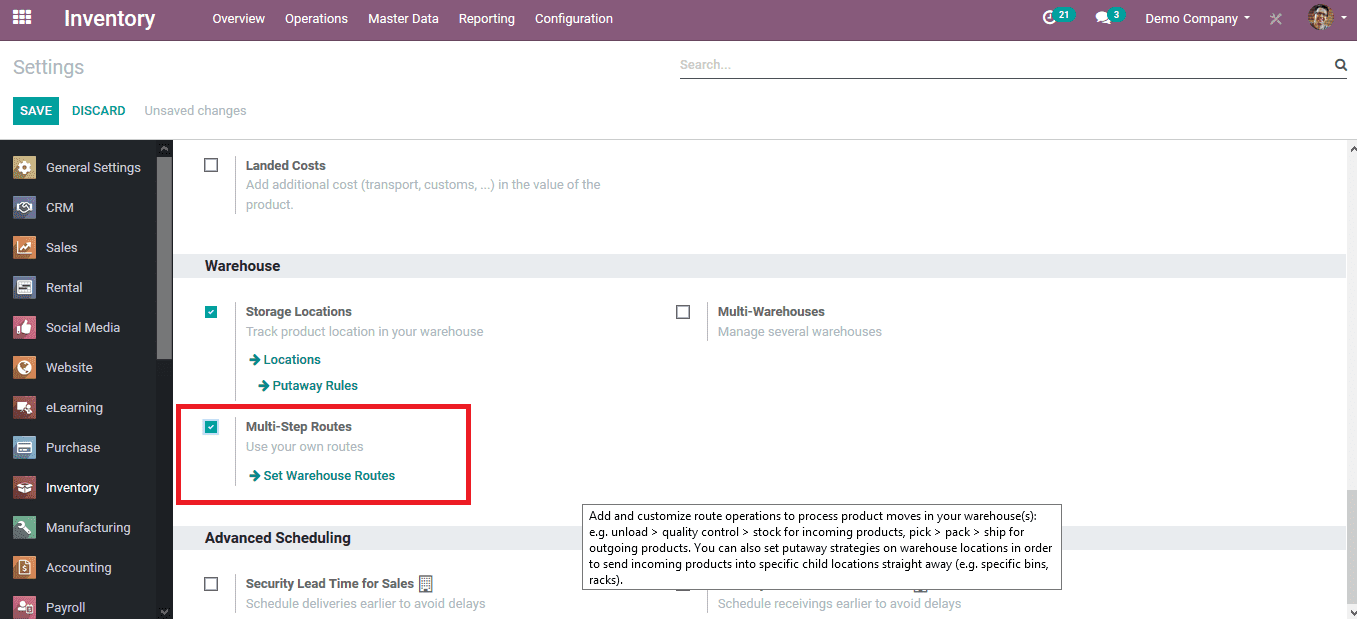
Save the settings menu and back in the warehouse of the company the user should change some additional settings which would allow the cross-docking functionality. The warehouse menu selected from the configuration window of the inventory module selects the respective company warehouse if there are multiple warehouses available for the company.
In the shipping, the section changes the settings of the input and output shipments available as shown in the below image.
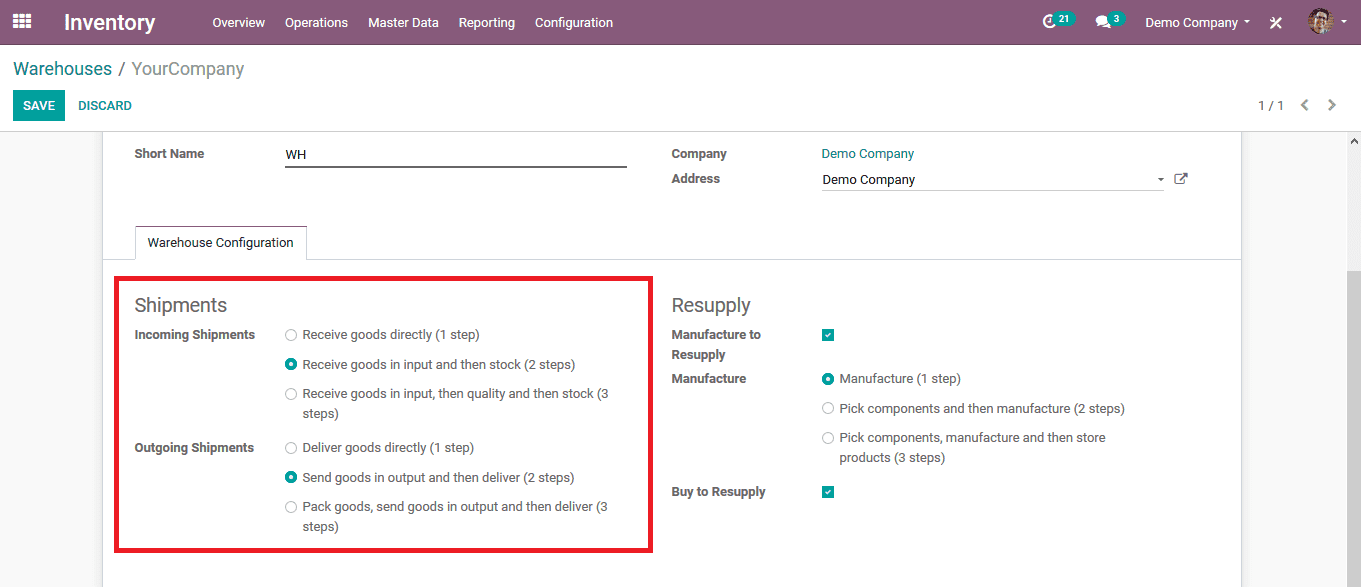
On changing the settings in the menu the user should save the warehouse menu now back in the routes of operation in the company an additional company route will be added as a cross-dock route. To view, the respective route selects the routes menu available in the configuration menu of the inventory module and select the respective cross-dock route.

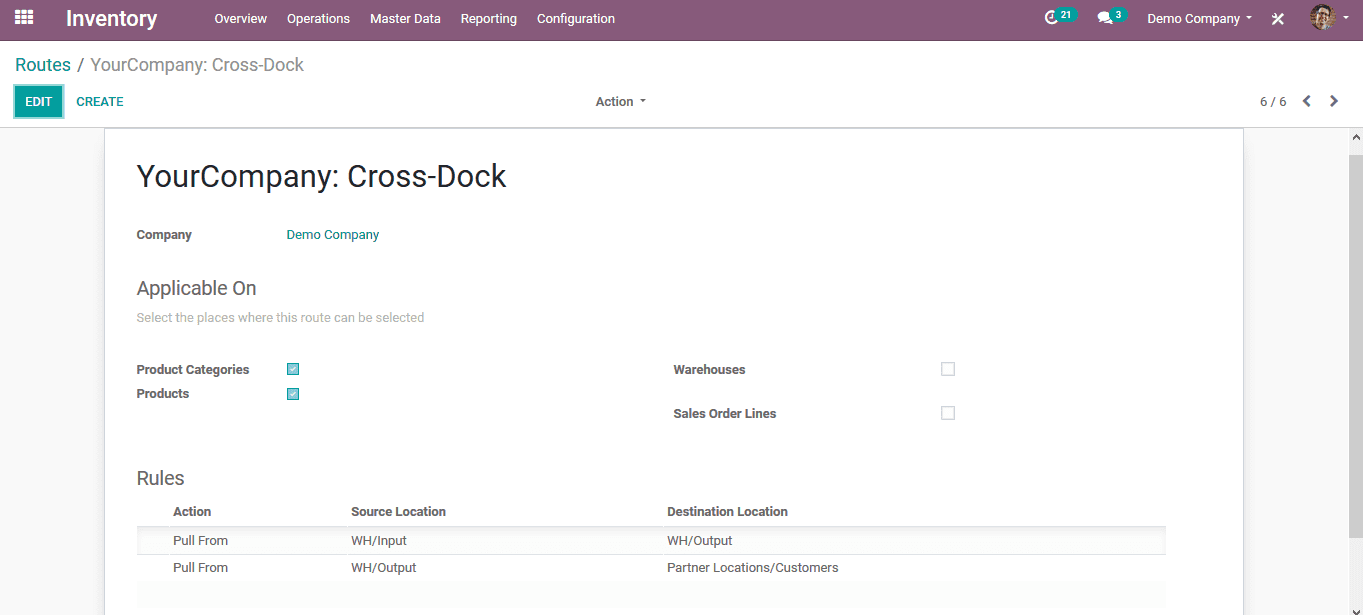
Now as the cross-docking routes of operations are being set up to illustrate how the operation works let's assign the cross-docking functionality to a product in the inventory. Select the respective product form the product menu in the master data. In the inventory menu of the product select the operations of routes to be cross-docking and purchasing. On changing the settings the window should be saved before closing.
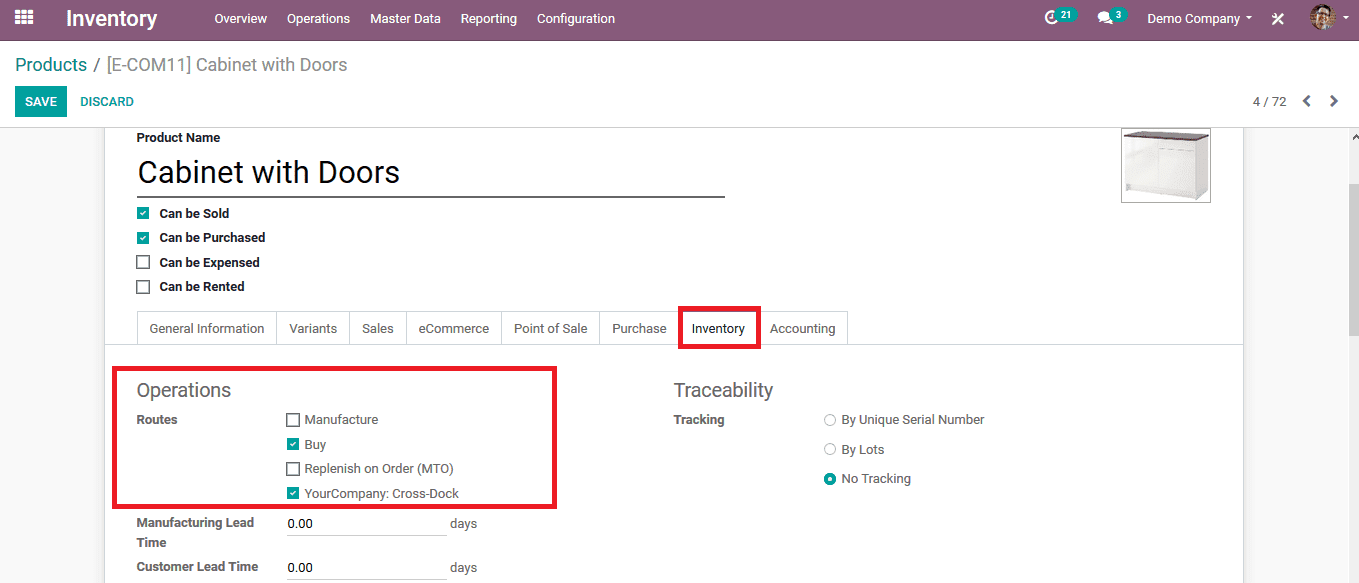
No care sales quotation for the respective product. Provide the details in the new sale quotation selected to create from the sales module and add the respective product. Confirm the quotation and the quotation status appears to be waiting for an inhouse action to complete the operation.
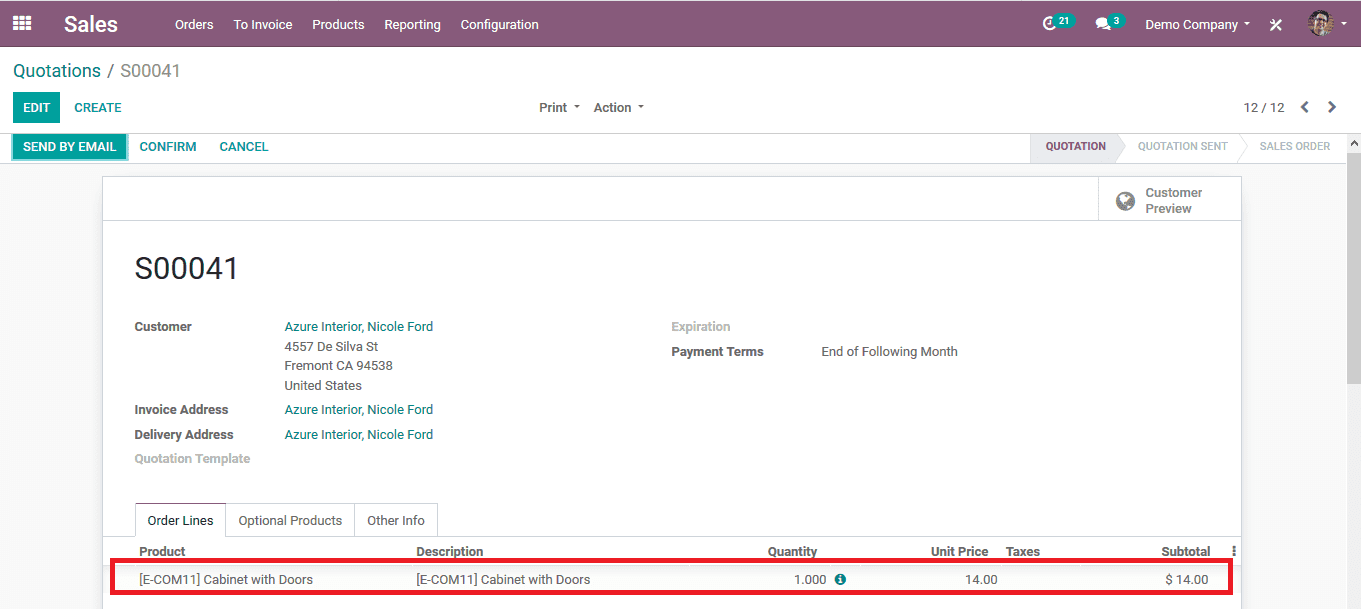
Now go back to the purchase module and the user can view the respective purchase order which is auto-generated as per the needs form the source document i.e. the respective sales quotation which is created earlier.
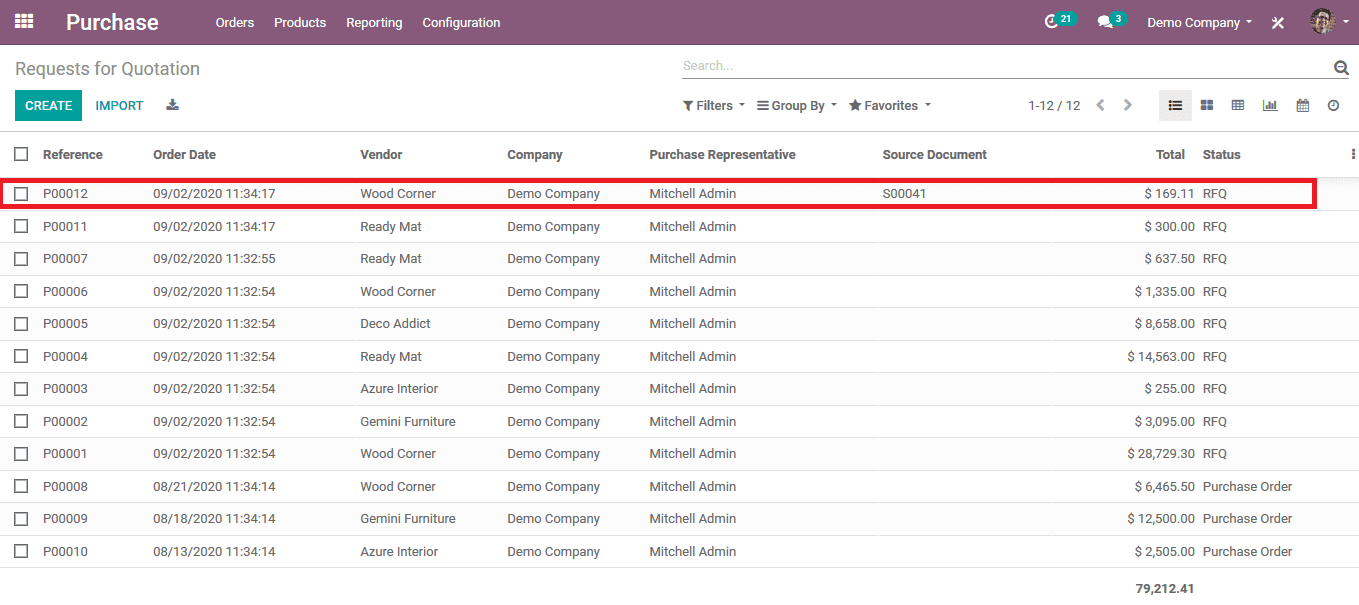
On selecting the quotation the user can view the details of the order and can confirm it upon verifying them.
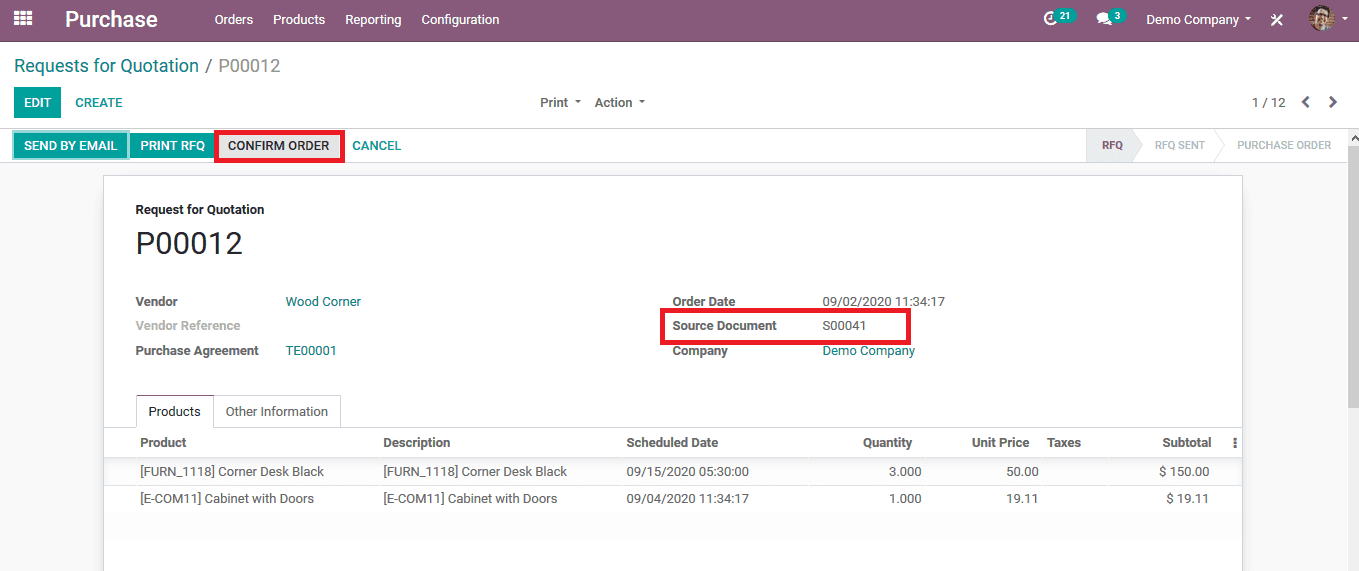
Now back in the sales order the user can view the status on the transfer of products to be ready as the purchase is confirmed.

The Cross-docking functionality of Odoo is a handy tool in the inventory operations and product movement management which allows the user to move the products directly from the shipment to the delivery.
Also Read: Odoo 13 Warehouse Management and Routing